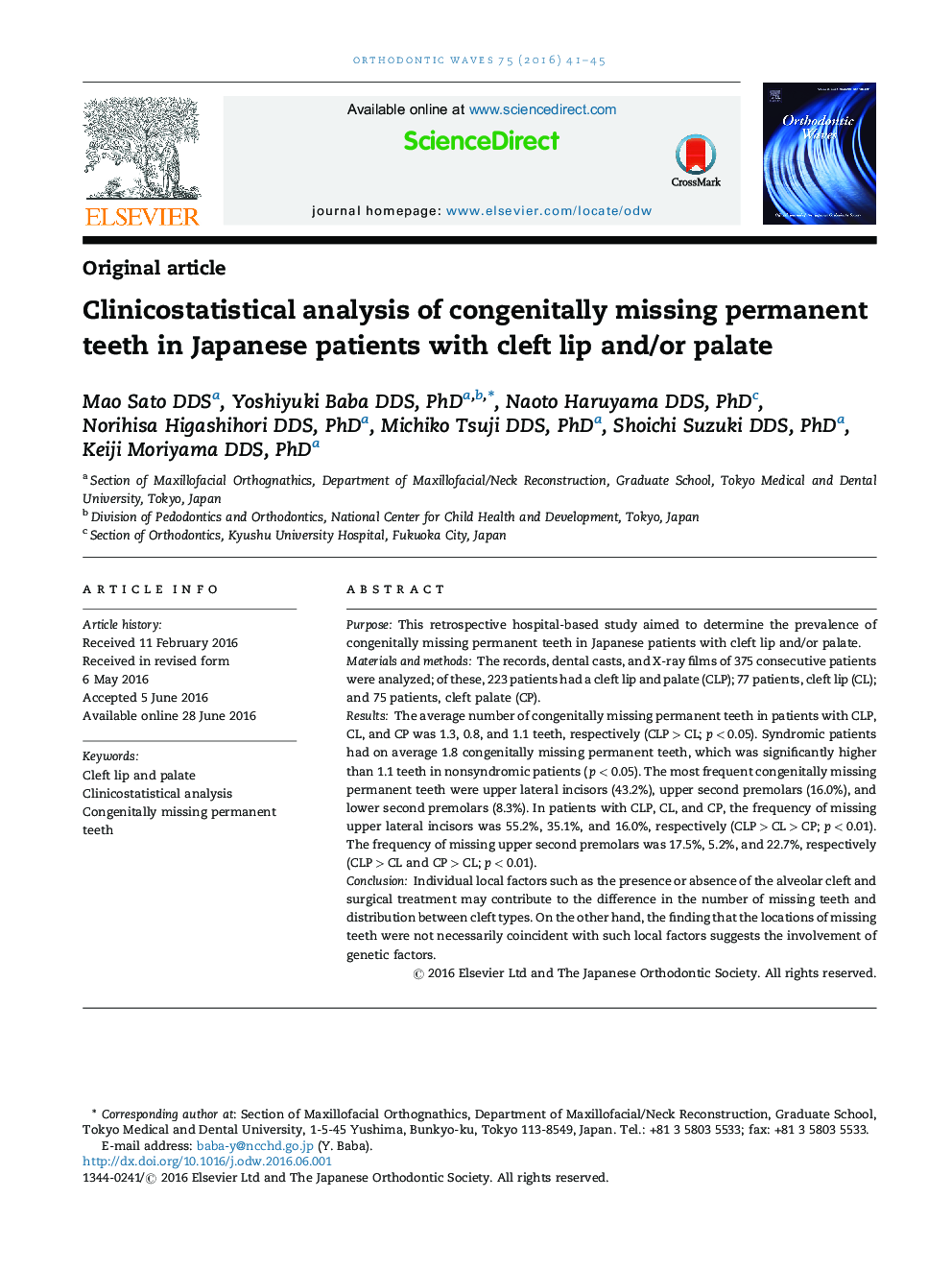| Article ID | Journal | Published Year | Pages | File Type |
|---|---|---|---|---|
| 3170270 | Orthodontic Waves | 2016 | 5 Pages |
PurposeThis retrospective hospital-based study aimed to determine the prevalence of congenitally missing permanent teeth in Japanese patients with cleft lip and/or palate.Materials and methodsThe records, dental casts, and X-ray films of 375 consecutive patients were analyzed; of these, 223 patients had a cleft lip and palate (CLP); 77 patients, cleft lip (CL); and 75 patients, cleft palate (CP).ResultsThe average number of congenitally missing permanent teeth in patients with CLP, CL, and CP was 1.3, 0.8, and 1.1 teeth, respectively (CLP > CL; p < 0.05). Syndromic patients had on average 1.8 congenitally missing permanent teeth, which was significantly higher than 1.1 teeth in nonsyndromic patients (p < 0.05). The most frequent congenitally missing permanent teeth were upper lateral incisors (43.2%), upper second premolars (16.0%), and lower second premolars (8.3%). In patients with CLP, CL, and CP, the frequency of missing upper lateral incisors was 55.2%, 35.1%, and 16.0%, respectively (CLP > CL > CP; p < 0.01). The frequency of missing upper second premolars was 17.5%, 5.2%, and 22.7%, respectively (CLP > CL and CP > CL; p < 0.01).ConclusionIndividual local factors such as the presence or absence of the alveolar cleft and surgical treatment may contribute to the difference in the number of missing teeth and distribution between cleft types. On the other hand, the finding that the locations of missing teeth were not necessarily coincident with such local factors suggests the involvement of genetic factors.
